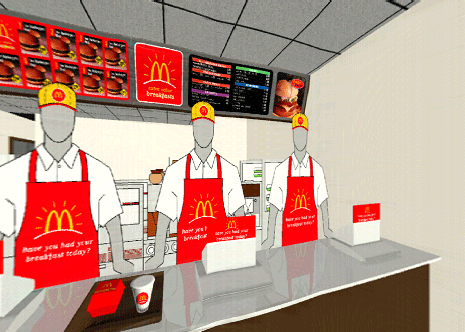Recent strikes by employees of McDonalds and Wal-Mart demanding a higher minimum wage have gained headlines on all the news feeds. The strikers claim that they can’t live on the Federally mandated $7.25 an hour. The California legislature recently voted to raise that state’s minimum wage from $8.00 to $10.00 hourly.
Certainly for a full time worker (40 hours for 50 weeks a year) making $14,500 a year isn’t a viable living wage. Add in approximately $1,800 Earned Income Tax Credit, and assume only 8% in payroll taxes (SSI and SUI) and we are still only at $1,260 a month. Take out $500 for shared rent and utilities on a small apartment, $50 a week for gas, and a $250 payment on a used car, and a single person is left with about $75 weekly for food, clothing, cell phone and entertainment. Not an impressive lifestyle.
Under the new California minimum, you’d have $136 a week, assuming you could find a $500 apartment in, say, San Francisco. In either scenario, there isn’t much left for a doctor’s visit or an oil change.
Unfortunately, raising wages doesn’t always help. According to The Economist, the effective marginal tax rate (combined loss of credits/benefits and income tax) by increasing annual income from $18,000 to $20,000 a year is 95%! That’s right; making $2,000 more would earn $100 for the worker, and net the government an additional $1,900.
 Now, let’s look at the employer side. Using rough published numbers, Wal-Mart earned about $4.50 for every employee hour worked last year. McDonalds’ earned about $1.60. Part time workers might make those numbers substantially higher, but it’s in the range. So a $2.00 increase in hourly wages would theoretically reduce Wal-Mart’s profit by 40%, and force McDonalds’ to rethink their entire labor model. (Self-serve kiosks, anyone?)
Now, let’s look at the employer side. Using rough published numbers, Wal-Mart earned about $4.50 for every employee hour worked last year. McDonalds’ earned about $1.60. Part time workers might make those numbers substantially higher, but it’s in the range. So a $2.00 increase in hourly wages would theoretically reduce Wal-Mart’s profit by 40%, and force McDonalds’ to rethink their entire labor model. (Self-serve kiosks, anyone?)
The minimum wage is not a living wage, and increasing it by a few bucks doesn’t make it so. Politicians are candid about their objectives with minimum wage levels. They believe raising them raises all wages. If entry level folks make $10.00 an hour, then the workers who were being paid $10.00 will have to be paid $13.00. They are swinging at a skin rash with a meat axe.
There are many reasons why trying to make the minimum wage into a living wage is problematic. Small business is often the first training ground for young people. Fast food restaurants are where millions of kids learned to show up on time, do things a particular way, and simply pay attention to what they are doing. That costs the employer money in addition to the wages.
Students, retirees and spouses may seek part-time “play money” work for supplementary income. They aren’t dependent on a living wage from the job.
Some employers really can’t afford it. Minimum wages aren’t means-tested for small business. What if an owner is bootstrapping a start-up? He or she might not even be earning minimum wage personally.
Placing a 15 year old high school kid, living at home and eating free food, into the same classification as a 30 year old single mother of two is dumb. Just as nonsensical is joining a small employer struggling for break-even in the same bucket as Wal-Mart. We need a system that recognizes the realities of the marketplace. Here are a few ideas:
- A lower “Training wage” for the first year of employment. Everyone pays social security , so the employment records already exist. For someone who can’t keep a job, or works only a few hours a week, that might be tracked as the first 2,000 hours of employment.
- A discounted minimum wage for those who are claimed as dependents by others.
- A tiered minimum wage for smaller employers, with tranches by number of employees. Existing ERISA regulations would apply to prevent chain operators from segmenting their business into many “small” employers.
- A stepped minimum based on continuous service. If an employer keeps a worker full time for a year, he/she is either deserving of a raise, or the employer has a problem with developing people.
- A special work/study minimum wage for workers who are interning in a field that matches their current enrollment in a job training program.
In a recent conversation with an official at the Federal Reserve, he expressed the Fed’s concern with the relationship between two statistics. The USA has the highest sustained unemployment in 70 years, while simultaneously recording all time highs in the number of help wanted ads. We are not training folks in how to qualify for, obtain and hold decent jobs. The meat axe of raising minimum wage levels across the board isn’t going to fix that.

2 Responses to A Tiered Minimum Wage for Small Business